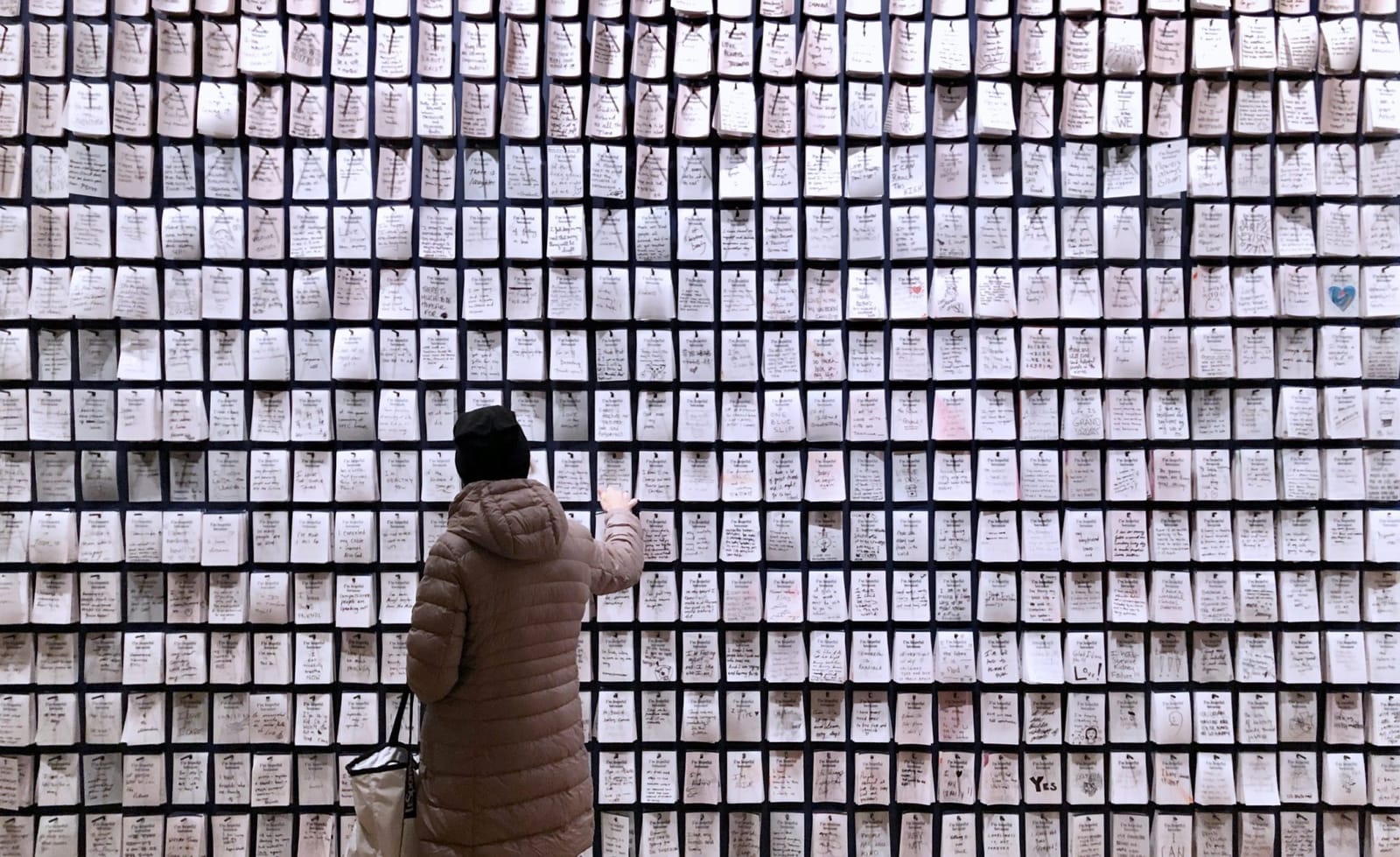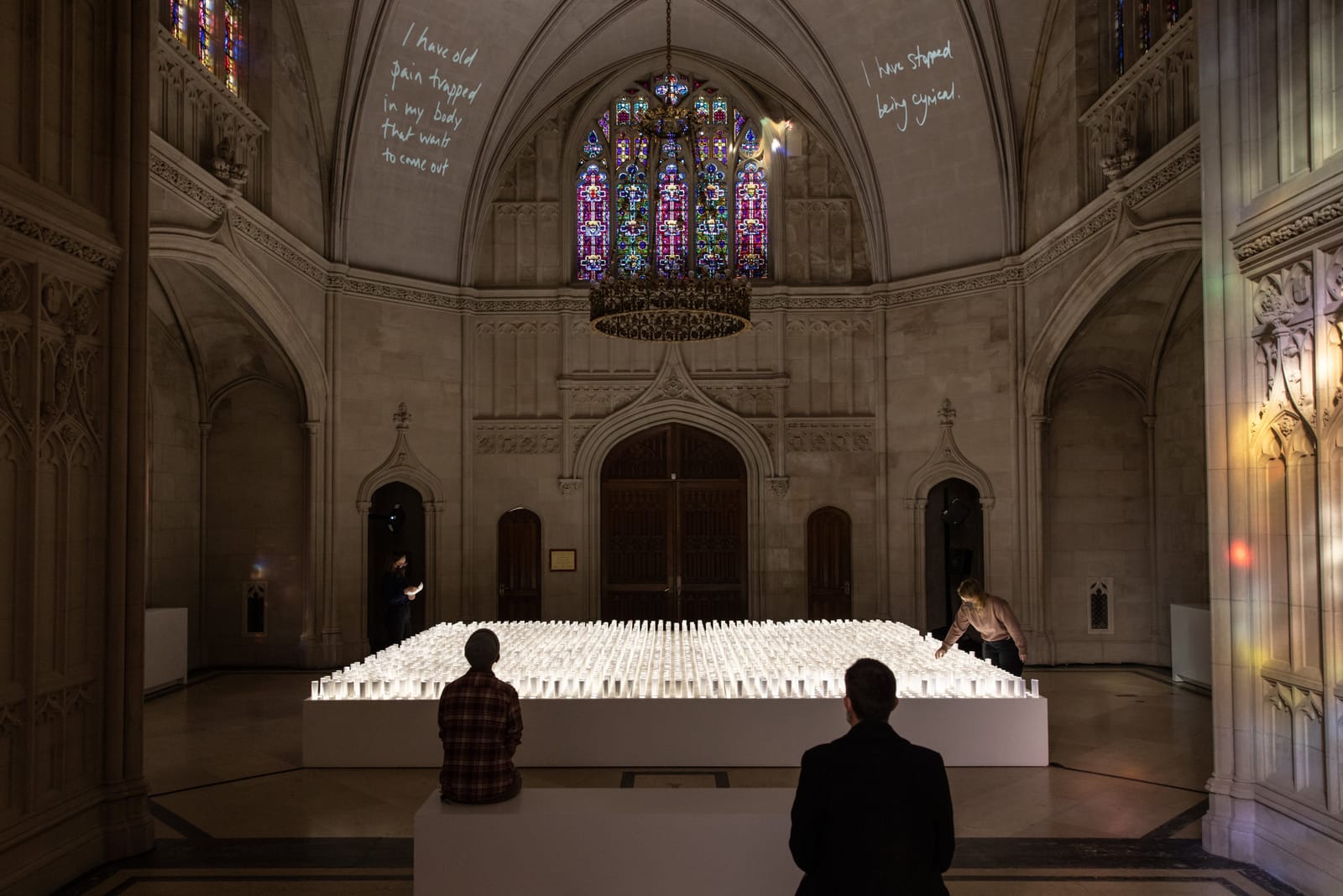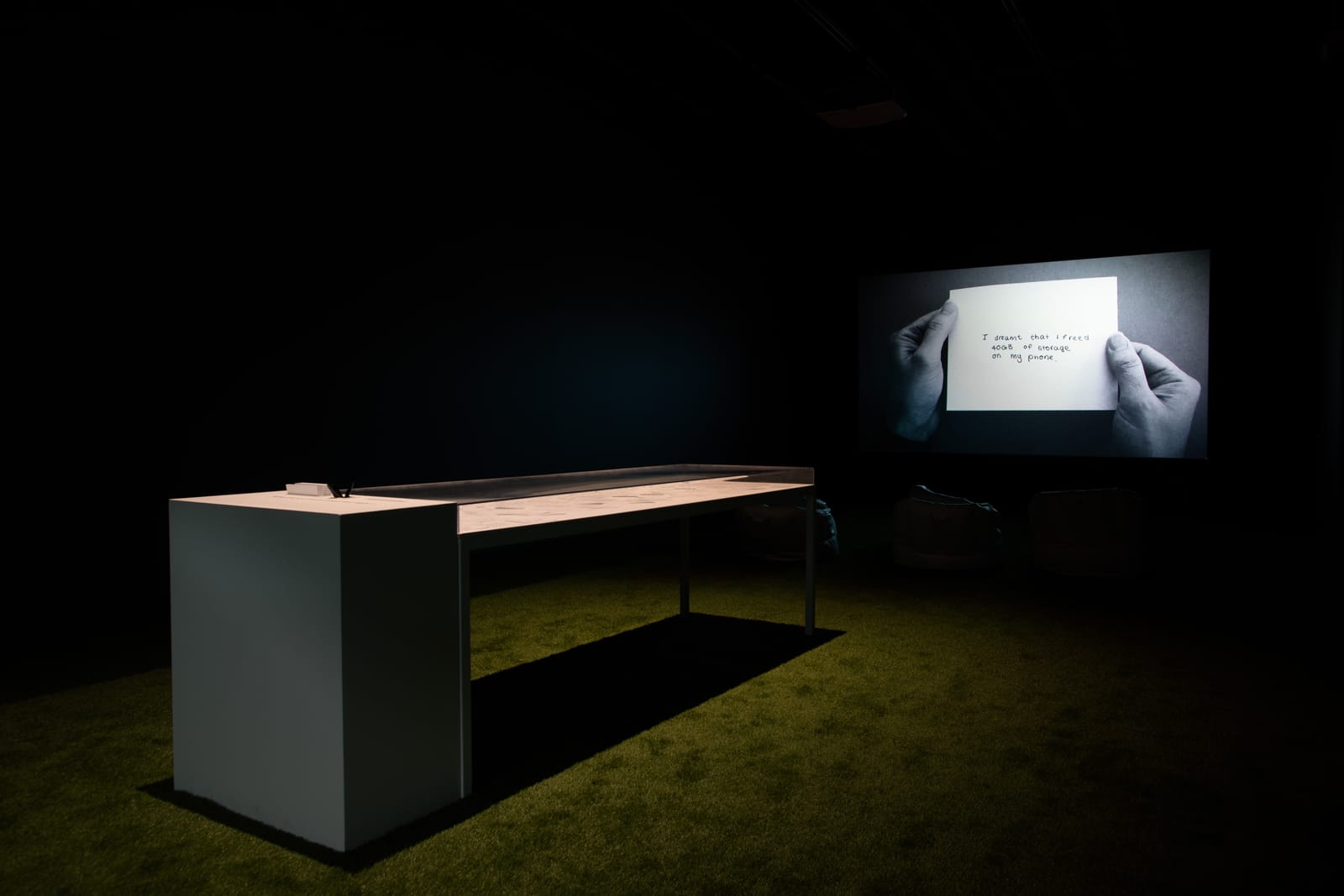These are challenging times. One in five American adults suffers from an anxiety disorder, and the rate ticks higher every year. Loneliness has become a public health epidemic. Political tribalism has doubled in the past decade, calcifying into outright loathing of “the other side.” But we don’t need surveys or statistics to tell us there’s a strange energy in the nation, something nervy and needy like an unwanted presence in the room. We see it everywhere. On our screens. In the streets. At the kitchen table. In the mirror.
In these days of alienation and polarization, we believe infrastructure for the soul is more necessary than ever. Although we share more in common with one another than anything that divides us, it feels as if we’ve forgotten how to have conversations, particularly the important ones that might help us reclaim some shared terrain. The discussions about the dreams we nurture and the reasons for our fears. The exchanges rooted in curiosity rather than judgment. The interactions that help us feel less alone.
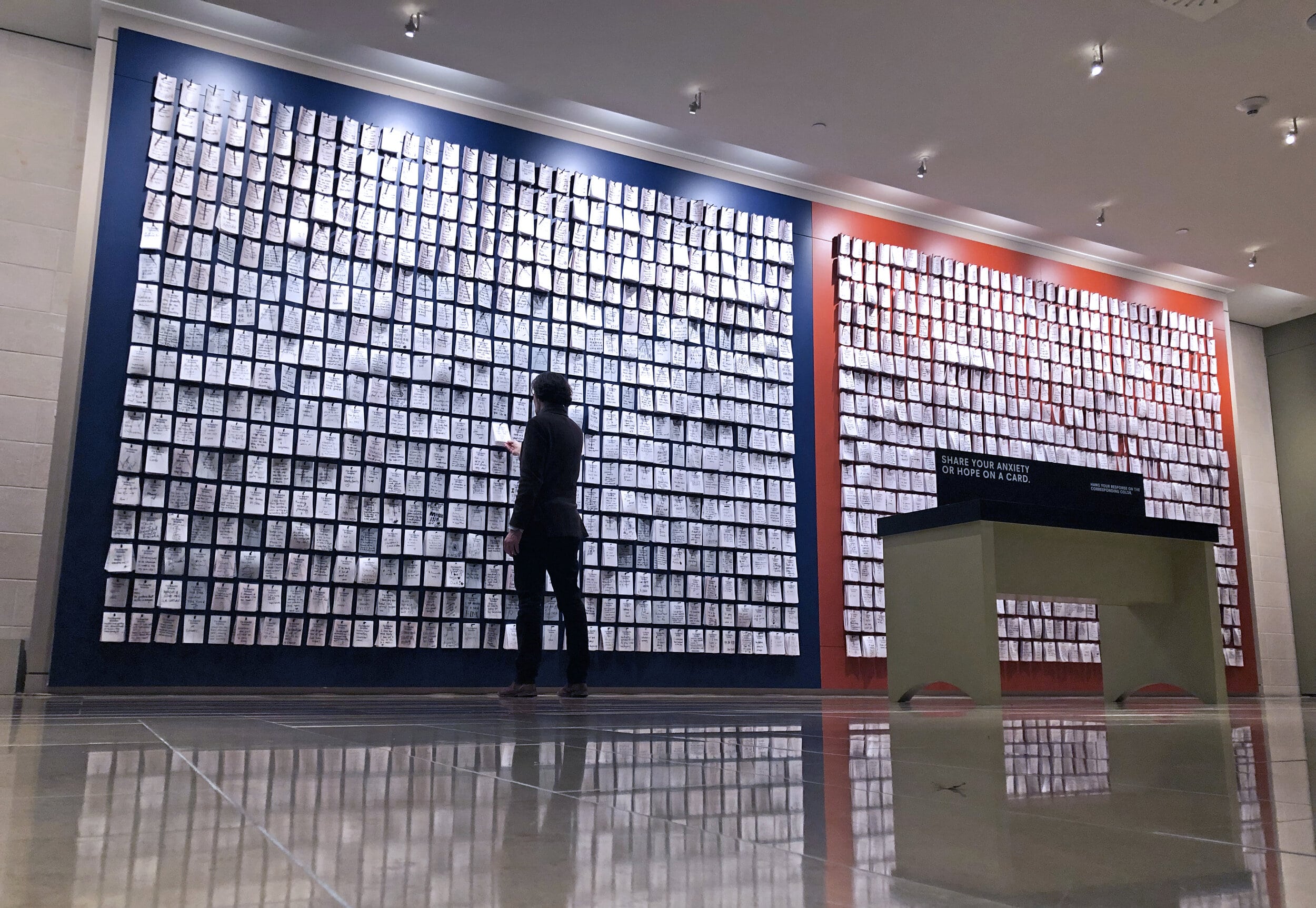
In 2018, Candy Chang and I created A Monument for the Anxious and Hopeful at the Rubin Museum of Art in New York City. Free to all passersby, this year-long participatory installation invited visitors to anonymously write their anxieties and hopes on vellum cards and display them on a 30’ x 15’ wall for others to see. The anonymity of these responses offers an antidote to digital fatigue. Our screens have reshaped the way we communicate so completely that there are very few places we can express ourselves in public today without feeling as if we’re performing for a scoreboard of hearts, stars, or thumbs-up icons. Seeing a private corner of your psyche expressed in a stranger’s handwriting can be incredibly reassuring, and it’s a step towards seeing ourselves in one another.
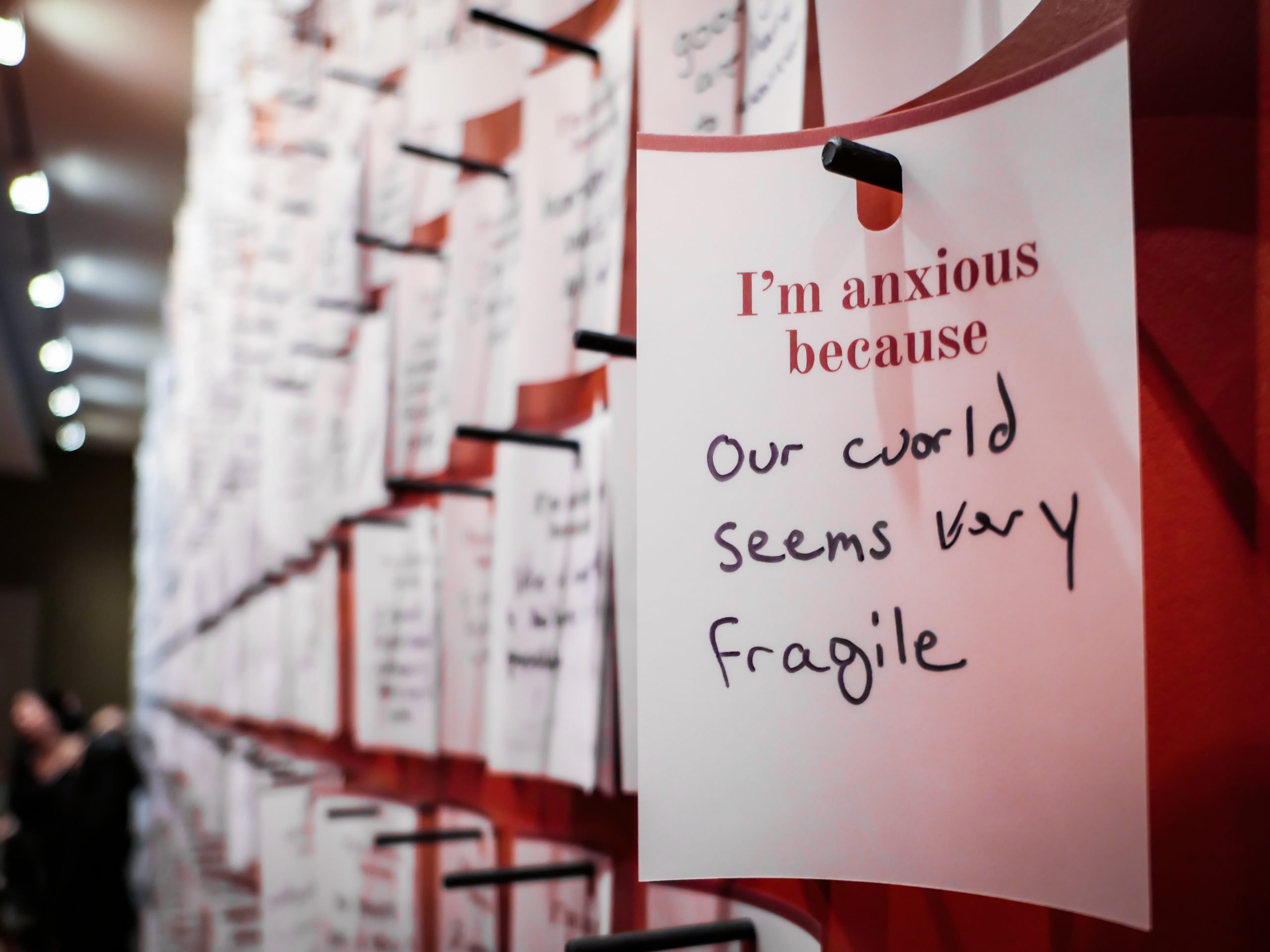
With each passing week, the wall grew into a monolithic barometer of the year’s emotional weather. Vivid fears in the wake of each mass shooting. Agitation and hope amid election season. And ongoing concerns about relationships, addiction, debt, and distraction, as well as inspiring reflections on compassion, family, and embracing change. As the responses continued to accumulate throughout the year, the wall became a consoling and enlightening site where visitors could glean the prevailing mood while exploring over 50,000 individual meditations ranging from deeply personal reflections to broader political, spiritual, and psychosocial statements.
